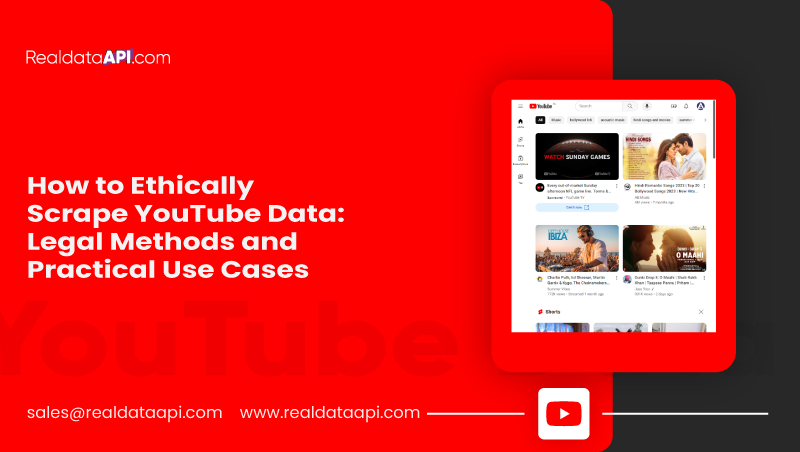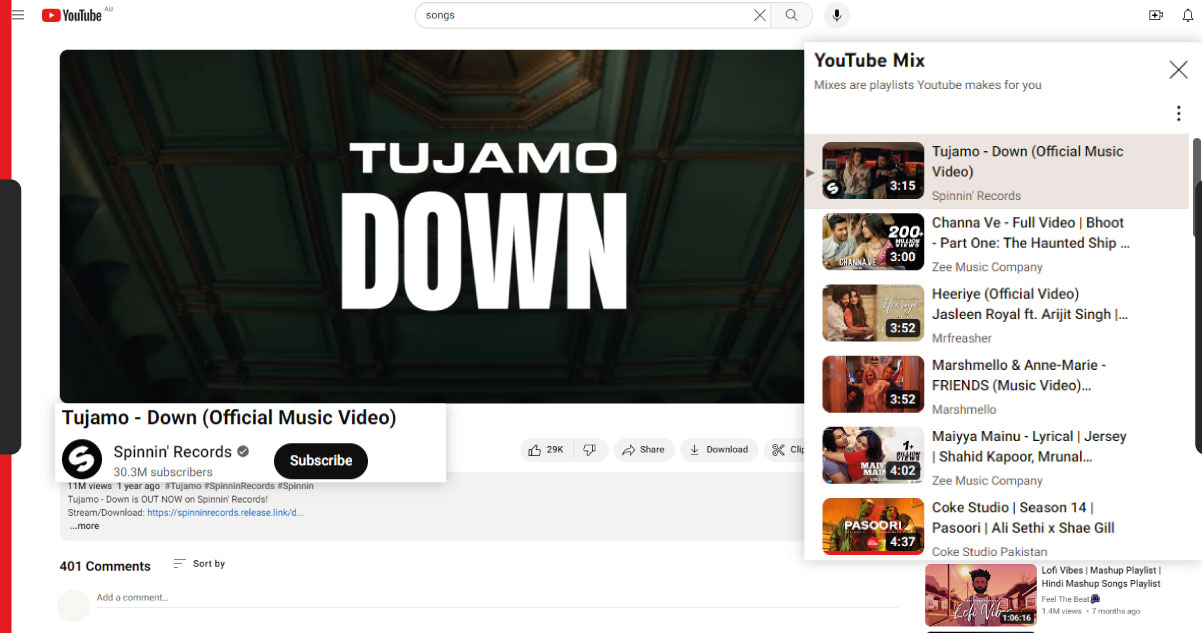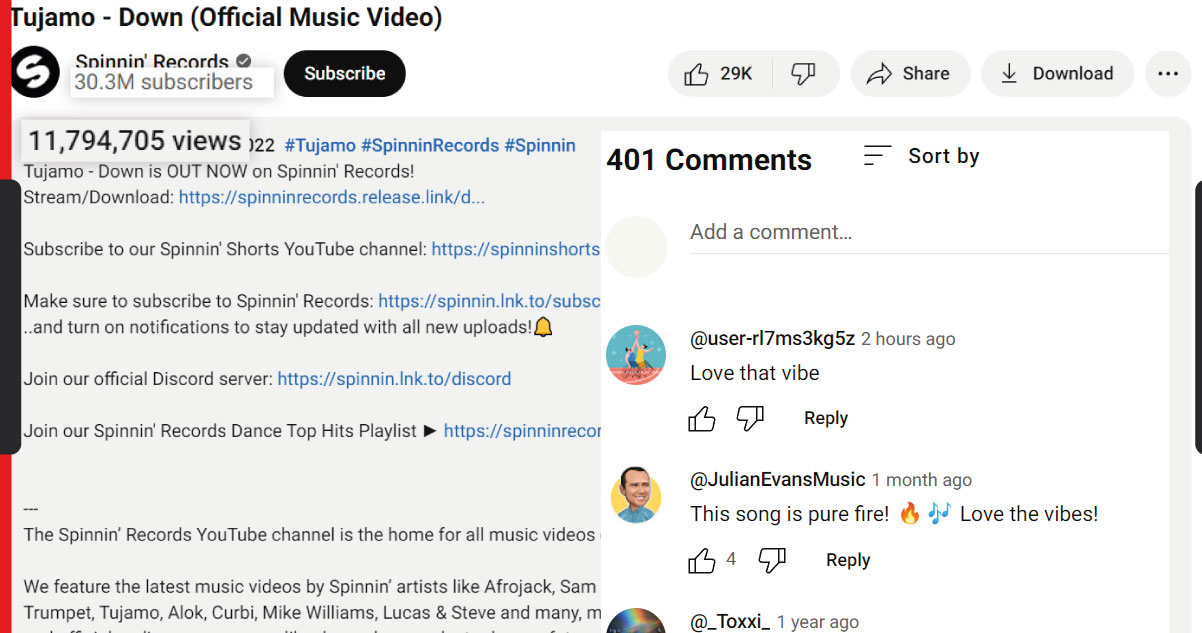

Introduction
In the dynamic landscape of online content, extracting valuable insights from YouTube data has become increasingly crucial. This guide aims to navigate the ethical terrain of scraping YouTube data by highlighting legal methods and illustrating practical use cases. As the demand for data-driven decision-making grows, understanding how to collect information from YouTube ethically ensures compliance with regulations and empowers individuals and organizations with valuable insights. From analyzing trends to enhancing content strategies, this guide provides a foundational understanding of ethical scraping practices, encouraging responsible and informed data utilization in the digital age.
What Is the Legality of Scraping YouTube Data?
The legality of scraping YouTube data is a nuanced and evolving subject. YouTube's Terms of Service explicitly prohibit unauthorized data collection from their platform. Automated scraping activities may violate these terms, leading to potential legal consequences.
However, legality can vary depending on the purpose and methods employed. If scraping is conducted for personal use and adheres strictly to YouTube's terms, it may be considered more acceptable. Yet, legal risks increase for commercial purposes or when large volumes of data are involved.
In some jurisdictions, web scraping itself is a contentious area of law. Courts have ruled differently on whether scraping without explicit permission is a breach of terms or a violation of the Computer Fraud and Abuse Act (CFAA) in the United States.
To navigate this legal landscape, staying informed about YouTube's terms, regional laws, and any updates to web scraping regulations is essential. Seeking legal advice before engaging in scraping activities, especially for commercial purposes, is advisable. As laws and platform policies are subject to change, ensuring compliance is crucial to avoid potential legal ramifications. Always refer to YouTube's most recent terms and conditions and consult legal professionals for the latest guidance.
What Types of Data Can be Scraped from YouTube?
Data scraping from YouTube can yield various types of information, providing valuable insights for diverse purposes. Here are some key categories of data that can be scraped from YouTube:
Video Metadata

Title: Extracting video titles helps in understanding the content and theme of each video.
Description: Accessing video descriptions provides additional context and information.
Tags: Scraping tags associated with videos aids in identifying relevant keywords and topics.
Channel Information
Channel Name: Retrieving the names of channels is essential for tracking content creators.
Subscriber Count: Scrutinizing subscriber numbers offers insights into a channel's popularity.
Upload Frequency: Extracting data on upload frequency helps in assessing content consistency.
View and Engagement Metrics

View Count: Scrapping view counts indicates a video's popularity.
Like/Dislike Count: Analyzing engagement metrics offers insights into audience reactions.
Comment Data: Extracting comments enables sentiment analysis and audience interaction assessment.
Playlists and Video Relationships
Playlist Information: Scraping data on playlists helps in understanding content organization.
Related Videos: Extracting related video information aids in mapping content relationships.
User Interaction Data
Subscriptions: Scrapping subscription data helps identify channels with similar audience bases.
Watch History: Analyzing watch history data can provide insights into user preferences.
Trend Analysis
Trending Videos: Extracting data on trending videos aids in identifying popular content.
Historical Data: Scraping historical data helps track trends over time.
It's important to note that while scraping these types of data can offer valuable insights, it should be done in compliance with YouTube's Terms of Service and relevant legal regulations. Additionally, ethical considerations should guide the use of scraped data to ensure responsible and respectful utilization within applicable laws and guidelines.
How to Scrape Data from YouTube: A Step-by-Step Process
Extracting data from YouTube involves several steps, and it's crucial to approach the process considering legal and ethical guidelines. Below is a general step-by-step guide on how to extract data from YouTube:
Understand the Terms of Service
Before proceeding, carefully review YouTube's Terms of Service. Ensure your data extraction activities comply with their policies to avoid legal consequences.
Identify Your Data Needs
Clearly define any particular data you need to scrape, such as video metadata, channel information, or user engagement metrics.
Select a Scraping Tool
Choose an appropriate data scraping tool or library. Popular choices include BeautifulSoup (Python), Selenium, or specialized YouTube scraping libraries. Make sure the tool aligns with your programming language preferences and requirements.
Set Up Your Environment
Install the selected web scraping tool and any necessary dependencies. Ensure your development environment is configured correctly.
Locate YouTube Data Sources
Identify the URLs or APIs that provide access to the data you want. YouTube's API is a structured way to access data programmatically.
Accessing HTML Content
If using web scraping, understand the structure of YouTube's HTML. Use your chosen tool to navigate and extract relevant information. This may involve inspecting elements on the page to identify HTML tags.
API Authentication (if applicable)
If using YouTube's API, set up authentication to obtain an API key. This key is necessary to make authorized requests to the API.
Write Code for Data Extraction
Implement code to extract the desired data. This involves sending requests to YouTube's servers and parsing the responses to collect your needed information.
Handle Rate Limits
Be aware of rate limits imposed by YouTube or its API to avoid being blocked. Implement appropriate strategies, such as sleep intervals between requests.
Store and Analyze Data
Once data is extracted, store the information in a structured format like CSV, JSON, or a database. Analyze the data as needed for your specific use case.
Respect Privacy and Ethical Considerations
Always respect user privacy, adhere to ethical guidelines, and ensure your data extraction activities meet legal and regulatory requirements.
Remember, the specific implementation details may vary based on your programming language, tools, and the type of data you aim to extract. Regularly check YouTube's policies for updates, and adapt your extraction methods accordingly. How to extract data from YouTube: Step-by-step
Scrape YouTube Data Use Cases
Scraping YouTube data can offer many insights and open up numerous application possibilities. Here are some compelling use cases for scraping YouTube data:
Content Strategy and Trend Analysis
Analyzing video titles, descriptions, and tags helps content creators understand trending topics and optimize their strategies for audience engagement.
Competitor Analysis
Scraping data on competitors' videos, subscriber counts, and engagement metrics provides valuable insights to refine one's own content and marketing strategies.
Audience Research and Targeting
Extracting demographic information from comments and user profiles helps businesses understand their audience better, allowing for targeted marketing efforts.
SEO Optimization
They were scraping video metadata to aid in identifying relevant keywords, enabling content creators to optimize their videos for search engines and improve discoverability.
Marketing and Brand Monitoring
Monitoring mentions and engagement with a brand's videos allow businesses to gauge their online presence and assess the effectiveness of marketing campaigns.
Educational Insights
Extracting data on popular educational content and topics can aid curriculum development and educational resource planning.
Ad Campaign Planning
Analyzing trending videos and popular channels helps advertisers identify suitable platforms for running targeted ad campaigns.
Influencer Marketing
Scraping data on influencers' reach, engagement, and audience demographics assists brands in selecting influencers aligned with their target audience.
User Behavior Analysis
Examining watch histories, liked videos, and subscriptions provide valuable data for understanding user behavior and preferences on the platform.
Research and Data Analysis
Academic researchers can benefit from scraping YouTube data for social, cultural, or communication studies, gaining insights into online behavior and trends.
Legal and Copyright Compliance
Scraping data can help identify and address potential copyright infringements, ensuring compliance with YouTube's policies and legal standards.
It's crucial to approach data scraping responsibly, ensuring compliance with YouTube's Terms of Service and legal regulations. Ethical considerations, user privacy, and transparency should be forefront of data extraction activities. Always keep abreast of platform policies and legal requirements to stay within the bounds of acceptable practices.
How Real Data API Can Help in Scraping YouTube Data?
Real Data API offers several ways to help with scraping YouTube data, catering to different needs and technical levels. Here's how they can assist:
Data Scraping Services
Custom scraping: They craft and execute personalized projects to extract specific data points from YouTube channels, videos, or search results. This could include video titles, descriptions, views, likes, dislikes, comments, subscriber counts, channel descriptions, and more.
Data as a Service (DaaS): They provide pre-built datasets of YouTube data readily available for purchase. These datasets may cover popular channels, trending videos, specific categories, or other pre-defined criteria.
API access: For more advanced users, they offer an API interface that allows programmatic access to their YouTube data. This enables integration with your applications and tools for automated data retrieval and analysis.
Specific Tools and Features
Targeted scraping: Specify URLs or search keywords to focus on specific channels, videos, or topics.
Date filtering: Limit the extracted data to videos uploaded within a specific timeframe.
Structured data: The extracted data is delivered in a well-organized format (CSV, JSON) for easy analysis and integration.
Scalability: Their infrastructure can handle large-scale scraping projects efficiently.
Compliance: They ensure compliance with YouTube's terms of service and data privacy regulations.
Benefits of using Real Data API
Saves time and effort: You don't need to build and maintain your scraping tools.
High accuracy and reliability: They have proven methods and technologies to extract accurate data consistently.
Focus on your analysis: Get the data you need and shift your focus to insights and insights generation.
Scalability and flexibility: Adapt their solutions to your needs and data volume.
Things to consider
Cost: Custom scraping projects involve fees, while DaaS and API access have different pricing models.
Data limitations: Publicly available YouTube data may not include private information or insights.
Ethical considerations: Always ensure your scraping activities comply with YouTube's terms and respect user privacy.
Overall, Real Data API can be a valuable resource for extracting and utilizing YouTube data for various purposes, from market research and competitor analysis to content strategy and audience insights.
Conclusion
Real Data API is a reliable partner for organizations seeking ethical and efficient YouTube data scraping solutions. Our custom scraping services are designed to meet diverse data extraction needs, ensuring compliance with legal regulations and platform terms. Committing to ethical practices, data enrichment, and seamless API integration, we empower businesses to harness valuable insights from YouTube. Experience the precision of our scraping techniques, enabling strategic decision-making and content optimization. Elevate your data strategy with Real Data API – your trusted ally in unlocking the full potential of YouTube data. Contact us today for tailored solutions that propel your business forward.















